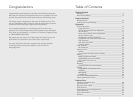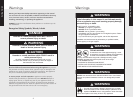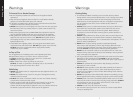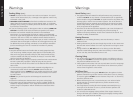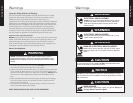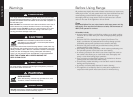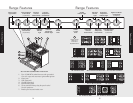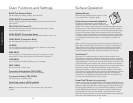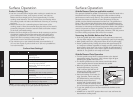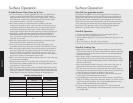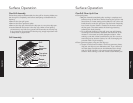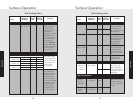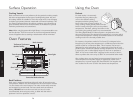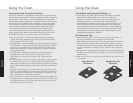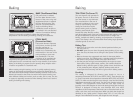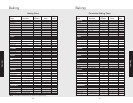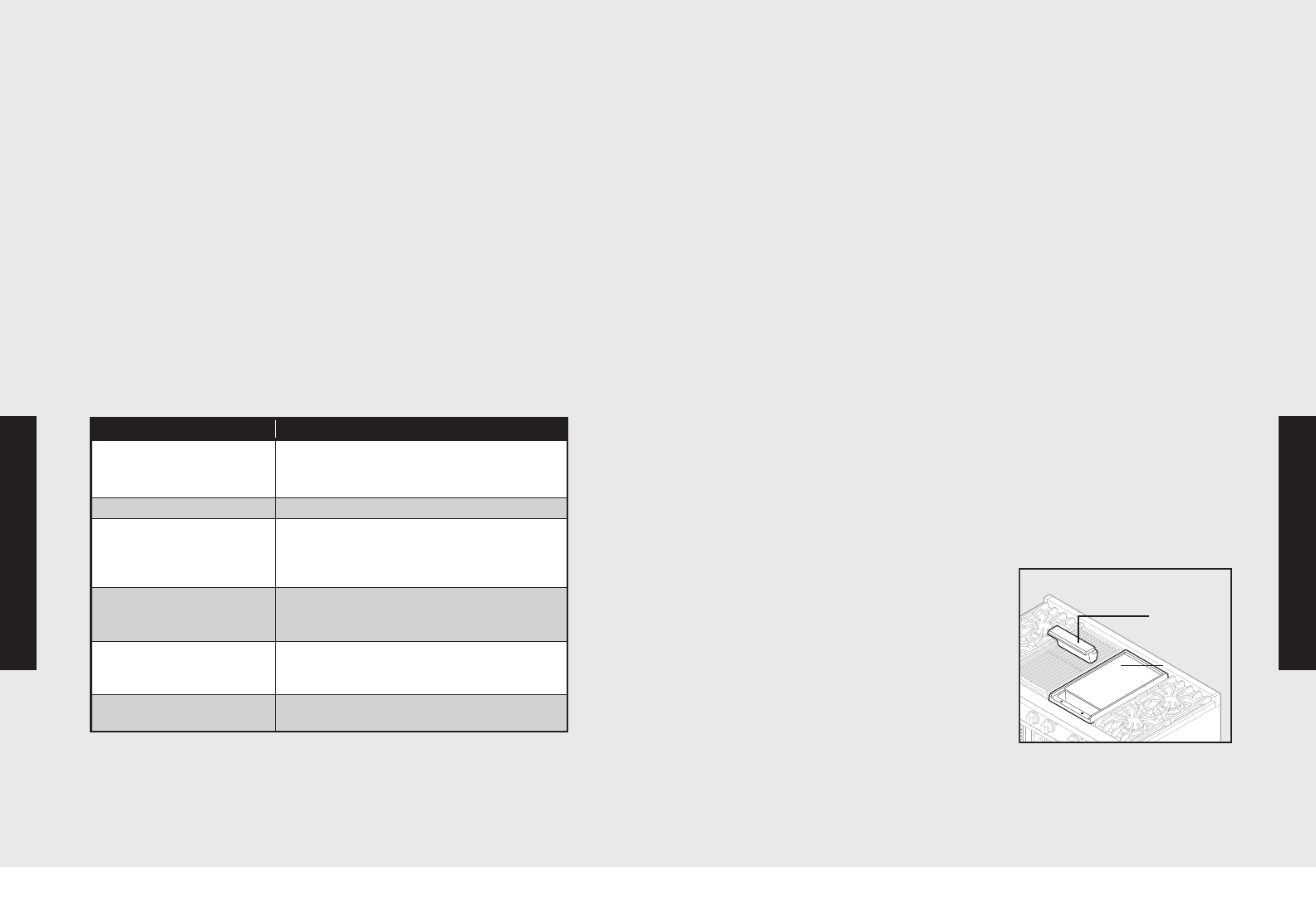
19
18
Surface Cooking Tips
• Use low or medium flame heights when cooking in vessels that are
poor conductors of heat, such as glass, ceramic, and cast-iron.
Reduce the flame height until it covers approximately 1/3 of the
cooking vessel diameter. This will ensure more even heating within
the cooking vessel and reduce the likelihood of burning or scorching
the food.
• Reduce the flame if it is extending beyond the bottom of the
cooking vessel. A flame that extends along the sides of the vessel is
potentially dangerous, heats the utensil handle and kitchen instead
of the food, and wastes energy.
• Reduce the flame height to the minimum level necessary to perform
the desired cooking process. Remember that food cooks just as
quickly at a gentle boil as it does at a rolling boil. Maintaining a
higher boil than is necessary wastes energy, cooks away moisture,
and causes a loss in food flavor and nutrient level.
• The minimum pot or pan (vessel) diameter recommended is 6”
(15 cm). Use of pots or pans as small as 4” (10 cm) is possible but
not recommended.
Surface Heat Settings*
*Note: The above information is given as a guide only. You may need
to vary the heat settings to suit your personal requirements.
Operation
Heat Setting Use
Simmer
Melting small quantities
Steaming rice
Simmering sauces
Low
Melting large quantities
Med Low
Low-temperature frying (eggs, etc.)
Simmering large quantities
Heating milk, cream sauces, gravies,
and puddings
Med
Sauteing and browning, braising, and
pan-frying
Maintaining slow boil on large quantities
Med High
High-temperature frying
Pan broiling
Maintaining fast boil on large quantities
High
Boiling water quickly
Deep-fat frying in large utensil
Surface Operation
Operation
Surface Operation
Griddle/Simmer Plate (on applicable models)
The optional 15,000 BTU griddle is constructed of machined steel with a
blanchard finish and is uniquely designed to offer excellent cooking
performance as well as easy clean up. The griddle is equipped with an
electronic thermostat to maintain an even temperature across the
griddle once the desired temperature has been set. The griddle has a
power “ON” indicator light which glows when the griddle thermostat
has been turned on. This will cycle on and off as needed to indicate the
thermostat is maintaining the selected temperature. Before the griddle is
used it is important to season the griddle. This seasoning process will
change the appearance of the griddle plate. However, it will also prevent
food from sticking and protect the surface from moisture.
Seasoning the Griddle Before the First Use
• Scrub the griddle plate with a mixture of one quart warm water and
1/4 cup white vinegar, using a blue Scotch-Brite
™ pad. Dry thoroughly.
• Wash griddle with warm, soapy water. Rinse off and dry thoroughly.
• Season griddle by thinly coating the surface with approximately 1⁄2
to 1 teaspoon unsalted vegetable oil. Apply to entire griddle using a
paper towel or clean cloth. Let oil sit on griddle for approximately 1
hour and then wipe with a clean cloth or paper towel to absorb any
residual oil. The griddle is now ready to be used.
Griddle/Simmer Plate Operation
• Turn the griddle control knob counterclockwise to the desired
temperature setting. The power “ON” indicator light will glow
indicating the griddle thermostat is on.
• The double griddle has two thermostat control knobs which
control separate burners located beneath the griddle.
• When the griddle has reached the
desired temperature, the power
“ON” indicator light will turn off
indicating the griddle is preheated
to the selected temperature.
• Use liquid cooking oil or butter for
eggs, pancakes, French toast, fish
and sandwiches to prevent sticking.
• Routinely scrape loose food
particles with a metal spatula during
cooking to make the cleanup easier
and to avoid the particles mixing with the food.
• To turn the griddle off, turn the thermostat knob clockwise to the
“OFF” position.
• ALWAYS turn to the“OFF” position when not in use and lower the
heat between cooking loads.
GriddleGriddle
Grease trough
Griddle
Griddle Assembly



